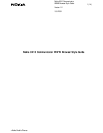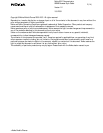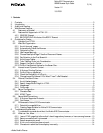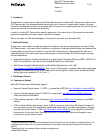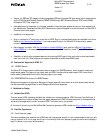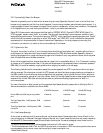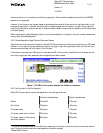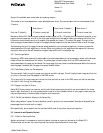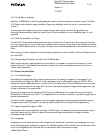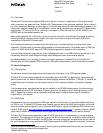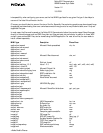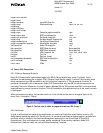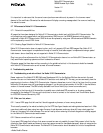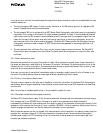
Nokia 9210 Communicator
WWW Browser Style Guide
6 (14)
Version 1.2
18/1/2001
ãNokia Mobile Phones
5.2.2 Automatically Detect the Browser
Users do not generally want to select which browser they are using. Especially they don’t want to be told that their
browser is not supported, and that they should upgrade. If you are using a modern web site hosting environment, it is
usually possible to detect the browser and supply correct content transparently, without user interaction. This depends
on the capabilities of your web-hosting environment – refer to your server documentation.
Nokia 9210 Communicator web browser identifies itself as “EPOC32-WTL/2.2 Crystal/6.0 STNC-WTL/6.0(build)” in
HTTP user agent header, where “build” is a number. This string will be available in an environment variable in most
web publishing environments. The important parts are “EPOC32”, which identifies the operating system, and “Crystal”,
which tells that the browser is operating on a half-VGA screen
3
, and “STNC-WTL”, which indicates the features and
requirements for the browser below the user interface level. Depending on for what purpose you are using this
information, you should try to match to the correct substring of this header.
5.2.3 Optimize for Size
The size of the content is critical. If you have large documents (listings, large tables, etc.), consider splitting them in
multiple parts for faster download. Large comment sections within HTML should be avoided. Especially the use of
scripting languages within a page may cause the page to be littered with very long comment blocks, which may slow
down the download over a wireless connection.
As for the total download time, some studies place an upper limit for acceptable delay to 10 to 15 seconds, including
all images, on a PC-based browser. Even if the users are accustomed to the somewhat slower transmission speeds of
GSM data, this could be used as a rough guideline when judging the usability of a web page.
The following table shows the transmission speeds that can be expected over HTTP in optimal conditions and good
cellular coverage. The values given include the HTTP request and should be taken as approximations, and depend on
the GSM network, Internet service provider configuration and equipment, other Internet Protocol traffic, server and
client load, compression, encryption, and other factors. Note that the High-Speed transfer modes are generally more
expensive than normal GSM data, and are perhaps used only when downloading large amounts of data in a
continuous stream.
For more information on data transfer and the supported High-Speed data calls, please refer to Setting Up Dial-In
Service documentation, available from Forum Nokia.
10 kB HTML document 10 kB JPEG image
4
100 kB JPEG image
Normal GSM data, 9600 bps, analog modem
pool
12 seconds 14 seconds 98 seconds
Two High-Speed slots, 14400 bps each, ISDN
connection
6 seconds 8 seconds 39 seconds
Three High-Speed slots, 14400 bps each, ISDN
connection
5 seconds 7 seconds 27 seconds
5.2.4 Use Frames Sparingly
As the screen is relatively small, frames quickly eat up the screen estate. Frames also make it more difficult for the
user to navigate on or bookmark the page. Users may also opt not to view frames the way they are usually viewed as
the Nokia 9210 Communicator supports three different frame styles. The web site designer cannot know how the
3
Crystal is a Symbian device family reference design that has a half-VGA resolution screen.
4
The difference between 10 kB HTML and JPEG files is the result of compression. JPEG files and encrypted content cannot
be compressed at lower protocol layers, resulting a slightly longer transmission time.



